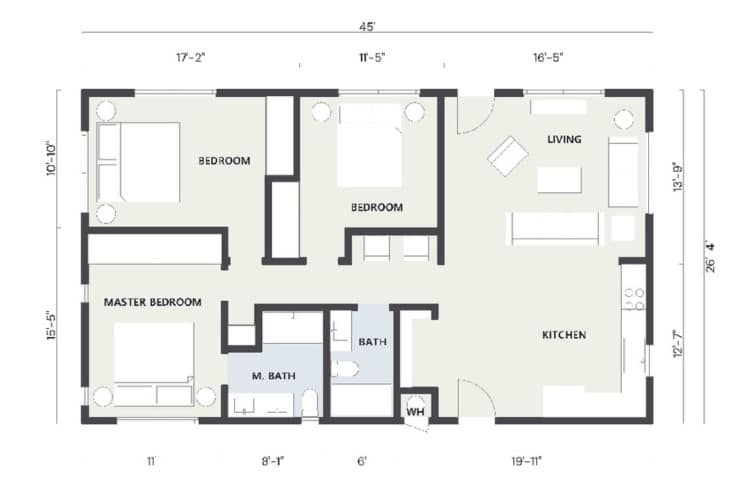What is Sustainable ADU Design?
12 min read
Sustainable ADU design is the process of planning and building Accessory Dwelling Units (ADUs) to minimize environmental impact and resource usage. It involves using energy-efficient systems, eco-friendly materials, renewable energy sources like solar power, and water-saving fixtures to create healthy, comfortable, and cost-effective living spaces.

Why is Sustainable ADU Design Important?
Sustainable ADU design is important. It gives homeowners environmental benefits. It also gives financial and quality-of-life benefits. In 2023, San Diego County issued more permits for ADUs (1,348 units) than for new single-family homes (1,225 units), highlighting the increasing popularity and importance of ADUs in addressing housing needs (GlobeSt). Additionally, homes with an ADU are valued 35% higher on average than those without, making them an attractive investment for homeowners (Source: National Association of Realtors).
Key benefits of incorporating sustainable design include:
- Energy Efficiency: High-efficiency building envelopes, such as superior insulation and air-sealing, coupled with energy-efficient HVAC systems, significantly reduce energy consumption, saving homeowners money on utility bills.
- Sustainable Materials: Using FSC-certified sustainable wood ensures responsible sourcing. It cuts deforestation and lowers environmental impact.
- Reduced Energy Loss: Dual- or triple-pane windows and doors cut heat transfer a lot. This improves comfort and lowers heating and cooling costs.
- Renewable Resources: Adding solar panels and rainwater harvesting cuts use of city resources. It lowers environmental impact. It also saves money on energy and water bills.
- Long-term Savings: Sustainable ADUs save money over time by lowering utility and maintenance costs. This makes them more affordable and raises resale value.
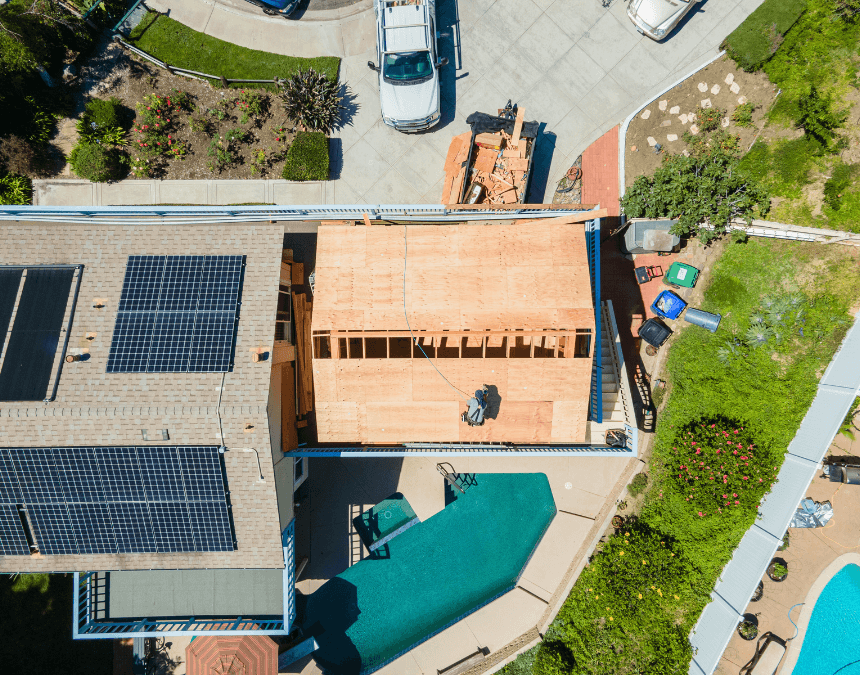
Curb appeal meets sustainability—use drought-tolerant landscaping, shading, and energy-smart windows to boost comfort and resale value.
What are the Key Principles of Sustainable Design?
California’s Title 24 building standards mandate solar panels on most new detached ADUs, underscoring the state’s commitment to renewable energy (California Energy Commission). Beyond compliance, incorporating sustainable design into your ADU involves several essential principles:
- High-Efficiency Building Envelopes: Prioritizing airtight construction with superior insulation reduces energy usage and maintains consistent indoor temperatures.
- FSC-Certified Wood Products: These come from responsible sources. They reduce environmental harm and support long-term ecological sustainability.
- Occupancy-Controlled Ventilation Systems: Occupancy-controlled ventilation systems keep air quality optimal. They save energy by running only when rooms are used.
- Passive Design Strategies: Use passive design strategies. Place the building and windows carefully. Use natural airflow to improve lighting, heating, and cooling without extra energy.
- Energy-Efficient Appliances and Renewable Energy Systems: These help reduce energy bills and carbon emissions. Use ENERGY STAR-certified appliances and solar power.
How Can ADUs Maximize Energy Efficiency?
Energy efficiency is at the heart of sustainable ADU design. LED bulbs, for example, use at least 75% less energy and last 25 times longer than traditional incandescent lighting (U.S. Department of Energy). As Cory Halbardier, CEO of Spacial ADUs, notes, “Spacial ADUs meet most elements of Passive Home’s design standards and include energy-efficient appliances, LED lights, dual pane windows, and a solar photovoltaic rooftop system” (REALTOR® Magazine).
To boost efficiency further, consider:
- High-Efficiency Insulation and Fenestration: Proper insulation paired with dual- or triple-pane windows significantly reduces heating and cooling costs.
- Energy-Efficient Mini-Split HVAC Systems: These systems give targeted temperature control. They use less energy than traditional HVAC systems.
- Sun-Oriented Designs: Design ADUs to face the sun. This uses natural sunlight and cuts need for artificial heating and cooling.
- ENERGY STAR-Labeled Windows: These certified windows improve insulation and cut energy loss.
- Proper Insulation: Install insulation properly and fully.
What are Optimal Insulation Techniques for Sustainable ADUs?
Approximately 30% of a home’s heating and cooling energy is lost through windows and doors. Sustainable ADU design addresses this by using energy-efficient fenestration, which greatly enhances insulation and minimizes air leakage ( Source: gb&d Magazine).
Key insulation techniques include:
- Understanding R-values: Higher R-values mean greater insulation efficiency, essential for meeting California’s stringent Title 24 energy codes.
- Using Recycled Insulation: Insulation made from cellulose or denim is effective and eco-friendly. It lowers environmental impact.
- Strategic Installation: Install insulation fully on walls, ceilings, and floors. This stops energy loss well.
- Compliance with Title 24: Title 24 sets maximum air leakage standards.
- Practical Benefits: Proper insulation yields lower utility bills, enhanced comfort, and increased property value.
Why Choose Efficient HVAC Systems?
Efficient HVAC systems are critical to sustainable ADU design, directly impacting both comfort and carbon footprint reduction. Consider these options:
- Mini-Split Systems: Highly efficient, allowing individual temperature control for separate areas, reducing wasted energy.
- Geothermal Heat Pumps: Utilize ground-source energy, offering substantial cost savings and reduced emissions.
- Energy Recovery Ventilators (ERVs): Energy Recovery Ventilators improve air quality. They exchange stale indoor air with fresh outdoor air. They keep energy used for heating or cooling.
- ADORE Homes’ HVAC Approach: Supports advanced HVAC technologies that balance comfort, sustainability, and cost.
- Thermal Comfort: Efficient HVAC systems keep temperatures steady. They use less energy and lower environmental impact.
How Can Renewable Energy Be Integrated into an ADU?
Using renewable energy is key to sustainable ADU living. The typical cost of an 8.1kW home solar system in California was about $21,786 in 2023, reduced potentially to $15,250 after applying the federal solar tax credit (EnergySage via NerdWallet). Renewable options include:
- Solar Panels: Produce clean, renewable electricity, significantly cutting energy bills and carbon emissions.
- Geothermal Heat Pumps: A sustainable and efficient way to heat and cool ADUs, considerably lowering monthly energy costs.
- California Incentives: California offers many state and local incentives for energy renewable solutions.
- Complementing Renewables with Daylighting: Use natural daylight through skylights or well-placed windows. This reduces energy use and works well with renewable energy sources.
- Green Roofs: Green roofs have plants and solar panels. They improve insulation, cut energy costs, and help local wildlife.
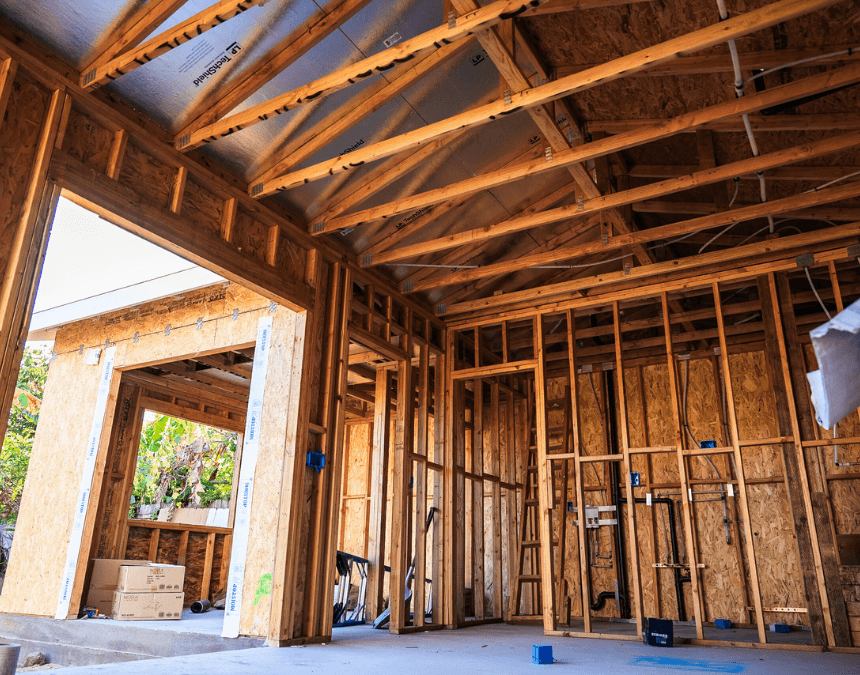
Design your roof and structure early for solar panel integration and proper insulation—this maximizes energy savings and Title 24 compliance.
What Eco-Friendly Building Materials Should You Use for Your ADU?
Selecting eco-friendly building materials is central to sustainable ADU construction. Focus on durability. Also consider sustainability and environmental impact. This keeps your ADU comfortable, healthy, and attractive for years. Key materials include:
- Siding Materials: Choose composite siding, reclaimed wood, or fiber cement for enhanced durability, sustainability, and fire resistance.
- Sustainable Countertops: Opt for recycled glass, bamboo, or reclaimed wood countertops to reduce environmental impact and add aesthetic appeal.
- Locally Sourced and Rapidly Renewable Materials: Use local and fast-renewing materials. This cuts transport emissions.
- Structural Integrity: Use bamboo, recycled steel, and recycled glass for structure. They are very durable and have a lower environmental impact.
- Multi-Pane Windows: Select windows with sustainable frames and double- or triple-pane glazing to provide superior insulation and reduce energy loss.
What Are the Benefits of Using Sustainable Materials?
Integrating sustainable materials into your ADU provides significant environmental, health, and economic advantages:
- Lower Embodied Carbon: Sustainable building materials reduce greenhouse gas emissions by minimizing resource extraction, processing, and transportation.
- Improved Indoor Air Quality: Eco-friendly materials often avoid toxic chemical off-gassing, creating healthier living environments (Metrovacesa).
- Increased Marketability and Resale Value: Homes built with sustainable materials attract buyers who care about the environment. This can raise property values.
- Aesthetic and Durability Advantages: Natural and recycled materials often look unique. They also last longer.
- Reduced Maintenance Needs: Durable eco-friendly materials typically require less upkeep, saving time and money in the long run.
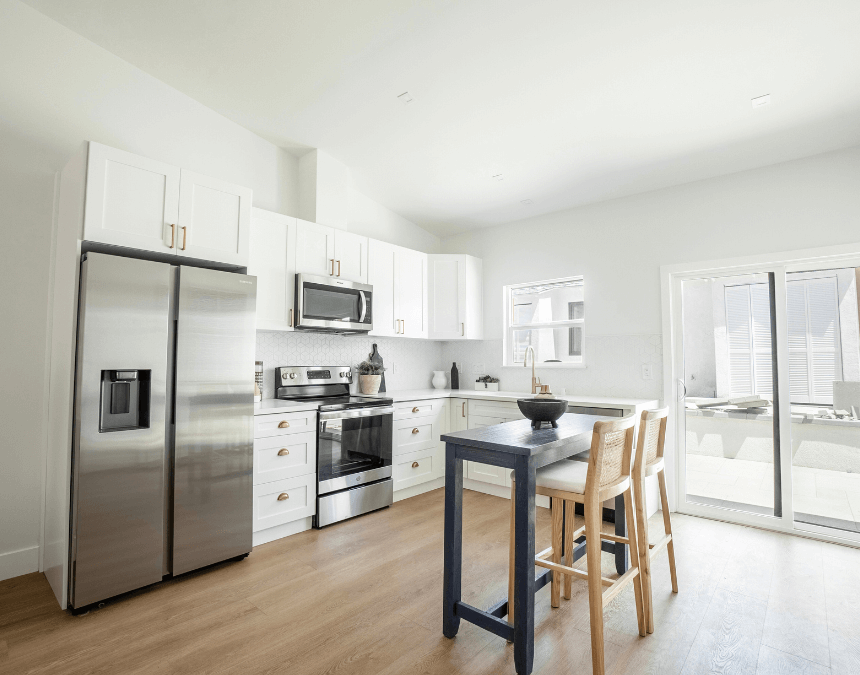
Choose recycled and non-toxic materials like low-VOC finishes and water-efficient fixtures to elevate sustainability and indoor air quality.
Which Common Eco-Friendly Materials Are Recommended for ADUs?
When constructing your sustainable ADU, prioritize these popular, environmentally friendly material options:
- Flooring: Bamboo, cork, or reclaimed wood are attractive, durable, and rapidly renewable flooring choices.
- Roofing: Recycled metal and cool roofs reflect sunlight, reducing heat absorption and lowering cooling costs.
- Insulation: Insulation made from recycled cellulose or denim improves heat efficiency. It also reduces environmental impact.
- VOC-Free Materials: Selecting building products free from volatile organic compounds (VOCs) improves indoor air quality and protects occupants’ health.
- Structural Timber: Use reclaimed wood and mass timber for structure. They are strong and have much less environmental impact than steel and concrete.
Best Sustainable Building Materials for Reducing Environmental Impact
| Material | Key Benefits | Notable Considerations |
|---|---|---|
| Bamboo | Fast-growing, renewable, strong, sequesters CO₂ | Needs treatment, transport |
| Recycled Steel | Infinitely recyclable, reduces mining | Energy-intensive production |
| Reclaimed Wood | Reduces new lumber demand, low embodied carbon | Limited availability |
| Hempcrete | Carbon-negative, insulating, breathable | Specialized labor, new material |
| Rammed Earth/Clay | Low embodied energy, regulates temperature | Weather-sensitive, techniques |
| Cork | Renewable, insulating, sequesters carbon | Mostly Mediterranean, damage |
| Recycled Glass | Reduces waste, lowers energy use | Processing energy |
| Ferrock/AshCrete | Uses waste, absorbs CO₂, strong | Emerging, limited availability |
| CLT | Carbon-negative, strong, insulates well | Needs sustainable forestry |
How Can Smart Technology Enhance Sustainability in Your ADU?
Adding smart technology to your ADU improves sustainability. It also gives convenience, efficiency, and saves money. For instance, installing a smart thermostat alone can result in average annual savings of around 8% on heating and cooling bills, translating to roughly $50 per year, with even greater potential savings depending on your local climate and energy use patterns (Source: ENERGY STAR).
Key smart technologies beneficial for sustainable ADU design include:
- Programmable Thermostats and Energy Monitoring Systems: Allow you to optimize energy use by adapting your heating and cooling schedules precisely to your lifestyle and occupancy patterns.
- Smart Appliances: Energy-efficient appliances integrated with smart home systems can significantly reduce your carbon footprint.
- Real-time Remote Management: Remote management lets homeowners watch and control energy use from afar. They can make quick changes to save energy.
- Precision Energy Control: Smart solutions give detailed control over energy use. They match sustainable design principles. This improves resource efficiency.
What Are the Benefits of Using Energy Management Systems in Your ADU?
Energy management systems play a crucial role in sustainable ADU living by helping you to track and reduce your energy footprint. The key benefits include:
- Carbon Footprint Reduction: Smart thermostats adjust to your occupancy and weather conditions, reducing unnecessary energy consumption and greenhouse gas emissions.
- Enhanced Efficiency through Monitoring: Real-time monitoring shows your energy use. It helps find ways to improve efficiency. For example, upgrade to energy-efficient windows. Or improve insulation.
- Optimal HVAC and Lighting Control: Manage heating, ventilation, air conditioning, and lighting well. This greatly cuts energy use.
- Data-Driven Insights: Use real-time energy data. This helps homeowners find inefficiencies and improve system performance.
- Holistic Energy Management: Uses integrated systems. These give full insights into total energy use. This makes reaching sustainability goals easier.
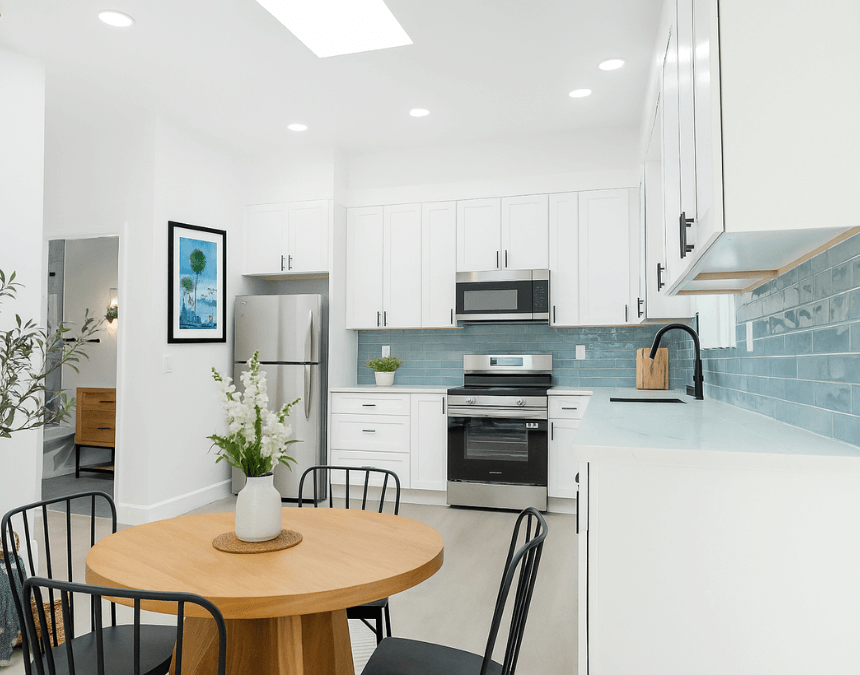
Incorporate smart appliances and lighting from the start—automated systems reduce energy waste and boost day-to-day convenience.
Which Water Conservation Technologies Should You Include in Your ADU?
Water conservation is very important in dry areas like California. Water-saving technologies are key for sustainable ADU design. Consider these impactful water conservation solutions:
- WaterSense-Certified Fixtures: Installing WaterSense-labeled showerheads alone can save an average family 2,700 gallons of water annually (EPA WaterSense).
- Graywater Recycling Systems: A family of four can reuse approximately 22,000 gallons of graywater per year by simply installing a washing machine graywater system (City of Encinitas).
- Low-Flow Fixtures: Use low-flow faucets, showerheads, and toilets. They cut water use without losing perfor
- Rainwater Harvesting: Rainwater harvesting means collecting rainwater for irrigation and non-drinking uses. This reduces your use of city water and creates a sustainable, self-sufficient water source.
- Practical Steps to Take: Start by choosing high-efficiency, water-saving fixtures.
Why Are Smart Thermostats and Energy Monitoring Crucial in ADUs?
Incorporating smart thermostats and real-time energy monitoring systems into your ADU maximizes efficiency, comfort, and sustainability through:
- Optimized Energy Use: Smart thermostats learn your preferences and automatically adjust settings to reduce energy waste, especially when spaces are unoccupied.
- Real-Time Energy Monitoring: It gives instant feedback to find and fix energy waste. This lowers energy use more.
- Remote Energy Management: Control your ADU’s climate remotely. This lets you act quickly to keep comfort and reduce energy use.
- Lower Carbon Footprint: Precise control of heating, cooling, and lighting cuts extra energy use. This lowers your carbon footprint.
- Enhanced Convenience and Comfort: Smart home integration makes sustainable living seamless, convenient, and adaptive to your daily routines.
What Water Conservation Strategies Should You Include in Your ADU?
Use water-saving methods in your ADU. This lowers environmental impact and cuts your utility bills. ADUs use less water than traditional homes because they are small. Adding water-efficient solutions makes these benefits better. Focus on installing water-saving fixtures. Add rainwater harvesting systems. Improve landscaping for better water efficiency.
Here are key water conservation strategies ideal for your ADU:
- Select Water-Efficient Fixtures: Focus on installing low-flow toilets, faucets, and showerheads to significantly cut water usage.
- Target High-Use Areas: Toilets, showers, and faucets account for most water use; optimizing these fixtures yields immediate results.
- Implement Rainwater Harvesting: Collect and reuse rainwater to lower use of city water, especially in dry areas like California.
- Leverage Small Space Efficiency: Use small space efficiency. Smaller ADUs need less water. This improves overall water saving.
How Do Low-Flow Fixtures Benefit Your ADU?
Low-flow fixtures offer a straightforward and highly effective way to significantly reduce water consumption within your ADU. These fixtures align with strict federal standards, ensuring both ecological and financial benefits:
- Substantial Water Savings: Ultra-low-flow fixtures dramatically reduce water consumption. For instance, replacing old showerheads with WaterSense-certified models saves approximately 2,700 gallons annually (EPA WaterSense).
- Target Major Water Use: Toilets alone can represent up to 30% of indoor water usage. Federal standards mandate toilets use no more than 1.6 gallons per flush, while ultra-low-flow models use as little as 1.28 gallons per flush.
- Financial and Ecological Gains: Upgrading fixtures lowers monthly water bills right away. It also helps the environment by reducing water use and waste.
- Compliance with Standards: Low-flow fixtures meet federal rules. This prepares your ADU for stricter water-saving laws.
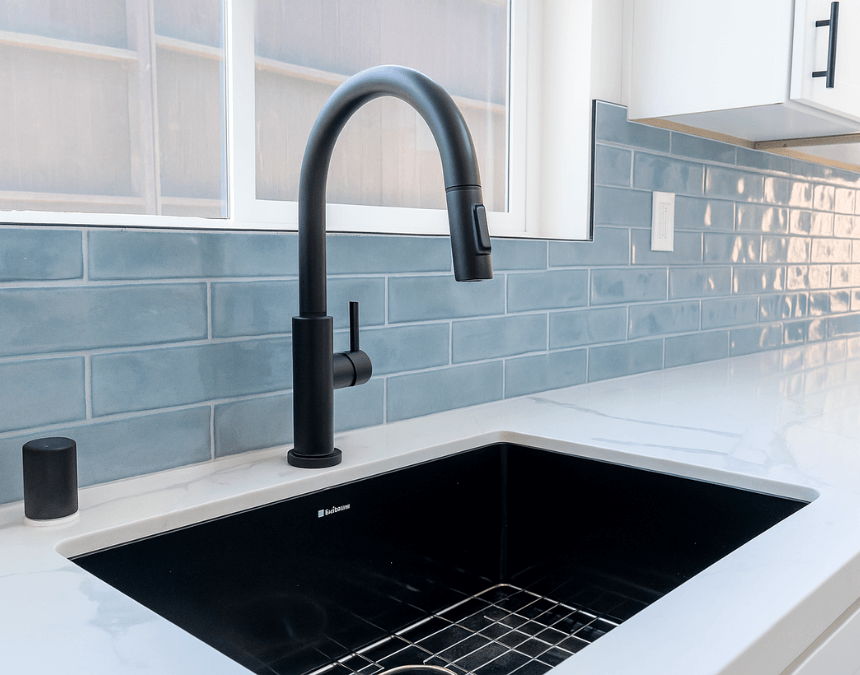
Pair rooftop solar with rainwater harvesting to reduce your ADU’s reliance on municipal resources and cut long-term utility costs.
How Can Rainwater Harvesting Systems Improve Sustainability in Your ADU?
Rainwater harvesting is an eco-friendly and practical way to cut water use. It supports sustainability in your ADU design. According to Energy.gov, “Harvested rainwater can provide a source of alternative water… offsetting the demand for fresh surface water or groundwater… Typical uses of rainwater include landscape irrigation, wash applications… cooling tower make-up water, and toilet and urinal flushing” (Energy.gov).
Benefits of rainwater harvesting for your ADU include:
- Reduced Municipal Water Use: Collecting rainwater from your roof for landscape irrigation and toilet flushing drastically cuts municipal water reliance.
- Strategic Integration: Design your ADU with integrated rainwater systems—such as rain barrels or cisterns—strategically placed for ease of use and maximum efficiency.
- Support Eco-Friendly Landscaping: Rainwater harvesting complements drought-tolerant landscaping, creating an overall sustainable outdoor environment
- Modern Sustainability: Includes rainwater harvesting. This shows how technology supports sustainable living in today’s ADUs.
How Can You Maximize Natural Resources in Your ADU?
Design your ADU to work with natural resources. This helps the environment and improves living comfort. Use renewable resources like solar power and rainwater harvesting. Study your building site for the best orientation. Choose energy-saving materials like high-performance windows. These steps boost efficiency and comfort. Plan landscaping and passive design carefully. These reduce your need for artificial energy. They create a healthier, sustainable home.
Consider these key approaches:
- Harmony with Nature: Position and design your ADU to blend naturally with environmental features such as sunlight, shade, and local climate patterns.
- Renewable Resource Integration: Use renewable technologies like solar panels and rainwater harvesting. These improve sustainability. They also increase resource independence.
- Site Analysis: Conduct a thorough analysis of your ADU location. This helps optimize natural heating, cooling, and lighting.
- Strategic Landscaping: Maximize daylight and manage solar heat gain with chosen landscape elements.
- Energy-Efficient Fenestration: Install energy-saving, multi-pane windows.
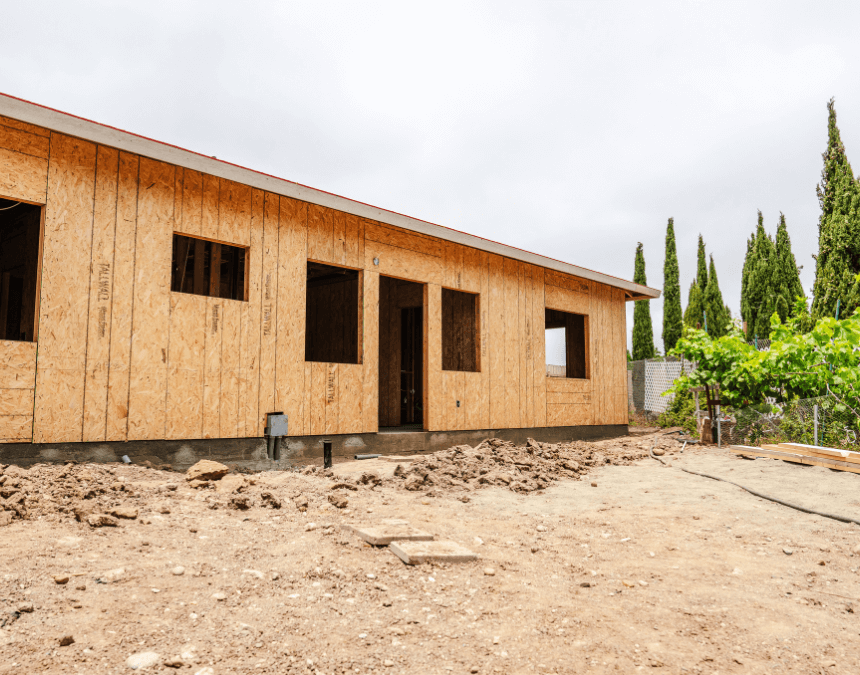
Strategically orient and landscape your ADU to capture sun, promote passive cooling, and reduce irrigation needs with native plants.
What Passive Design Techniques Should You Incorporate in Your ADU?
Passive design uses natural resources to reduce your ADU’s need for mechanical heating and cooling. This saves energy and lowers environmental impact. Effective passive strategies include:
- Shading Elements: Utilize awnings, trellises, and strategic landscaping to block excessive solar heat gain in summer months, naturally cooling your ADU.
- Deciduous Trees: Plant deciduous trees strategically to provide shade during warm months while allowing sunlight in during winter, enhancing passive heating and cooling.
- Cross-Ventilation: Design window placement to support natural airflow.
- Reduced Mechanical Dependence: Use passive methods like thick insulation, thermal mass, and good ventilation. These keep indoor comfort naturally and reduce mechanical needs.
- High Ceilings and Airflow: Incorporate higher ceilings and thoughtfully placed windows or vents to facilitate natural ventilation and improve indoor air quality.
Why are Shading and Daylighting Critical for Sustainable ADU Design?
Good shading and daylighting improve your ADU’s sustainability. They cut energy use and make occupants more comfortable. Effective shading reduces heat gain, while daylighting lessens the need for artificial lighting, lowering energy bills.
- Solar Heat Control: Use shading devices such as window awnings, shades, and pergolas to minimize unwanted heat gain, reducing air-conditioning loads.
- Daylighting Efficiency: Use many windows, skylights, and reflective surfaces to spread natural light. This reduces energy used for lighting.
- Solar Shading Solutions: Install fixed or adjustable shading solutions tailored to your ADU’s orientation to optimize indoor temperatures.
- LED Lighting Integration: Combine daylighting with energy-saving LED lights. This lowers energy use and operating costs.
- Energy Savings Impact: Good daylighting can cut an ADU’s energy use by 20-60%. This lowers utility costs and environmental impact a lot.
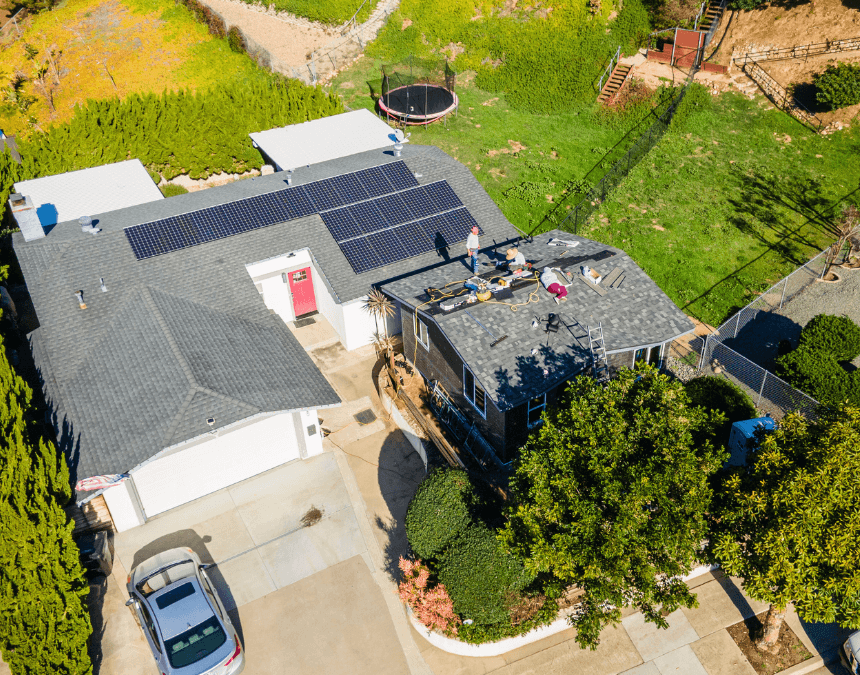
Build smarter by positioning your ADU for optimal solar exposure and integrating shading strategies early in the construction phase.
How Can Biophilic Design Elements Enhance Your ADU?
Biophilic design connects buildings to nature. It improves your ADU’s sustainability and quality of life. Add natural elements to your design. They provide health, cognitive, and emotional benefits. They also boost sustainability.
- Nature-Connected Interiors: Use natural materials like wood and stone from sustainable sources. They add indoor plants to make a healthier indoor space.
- Improved Air Quality: Utilize biophilic features such as indoor vertical gardens or living walls to purify indoor air naturally.
- Enhanced Cognitive Function: Exposure to natural elements through windows with outdoor views or indoor gardens enhances cognitive function and overall well-being.
- Indoor-Outdoor Connectivity: Create seamless transitions between indoor and outdoor spaces with large windows, sliding doors, and outdoor living areas.
- Practical Biophilic Solutions: For small ADUs, use vertical gardens, window boxes, and small indoor planters. These add biophilic design without using much space.
Enhancing Indoor Air Quality
Improving indoor air quality is crucial for a sustainable and healthy ADU. According to the EPA, Americans spend approximately 90% of their time indoors, where pollutants can be 2 to 5 times higher than outdoor levels. (Source: EPA.gov) Prioritize air quality by using low- or no-VOC materials. Use cross-ventilation. Also use indoor-outdoor designs. These steps cut harmful contaminants. Also, choose non-toxic furniture and building materials. This makes living spaces healthier.
Key considerations for improving indoor air quality:
- Low- or No-VOC Materials: Choose paints, finishes, and adhesives free from harmful chemicals to reduce indoor pollution and promote better respiratory health.
Cross-Ventilation and High Ceilings: Design your ADU with windows placed to help natural airflow. Use higher ceilings to remove stale indoor air. - Indoor-Outdoor Living: This connects indoor spaces to the outdoors and lets fresh air flow often, lowering indoor pollution.
- Safe Material Selection: Opt for furnishings and construction materials tested and certified as safe and low in chemical emissions, creating healthier indoor environments.
Ventilation and Air Filtration Systems
Proper ventilation and advanced air filtration are key to maintaining high indoor air quality in your ADU. Ductless mini-split HVAC systems have many benefits. They move fresh, filtered air efficiently without the pollutants found in traditional ducts.
Benefits of advanced ventilation and filtration include:
- Ductless Mini-Split Systems: Efficiently deliver clean, filtered air directly into living spaces, significantly reducing airborne pollutants.
- Strategic HVAC Choices: Choose HVAC systems like Energy Recovery Ventilators or Heat Recovery Ventilators. They swap stale indoor air with fresh outdoor air. They keep energy use low.
- Continuous Fresh Air Supply: Make sure your ADU has constant ventilation. This meets California building codes, improves indoor air quality, and keeps occupants comfortable.

Use non-toxic materials, houseplants, and biophilic elements to create a healthier indoor environment that supports cognitive and respiratory wellness.
FAQs
Building a sustainable ADU involves a careful process that uses high-efficiency materials, smart design, and eco-friendly choices. Key strategies keep existing trees for shade and carbon storage. They place sites to use passive solar gain. They choose local sustainable materials like FSC-certified wood, bamboo, and recycled metal. They use energy-efficient mini-split systems with efficient LED lighting. Adding solar panels, required by California’s Title 24 for new detached units after January 1, 2026, improves sustainability. Low-flow fixtures, rainwater harvesting, and drought-tolerant landscaping also help. To reach the best sustainability, consider modular accessory dwelling units. Also, pursue certifications like Net Zero or Passive House. These sustainable design improvements create cost-effective homes. They also make homes comfortable. They help solve California’s housing crisis, reduce poor air quality, and lower environmental impact.
The best shape for a sustainable house is simple and compact, like a cube or dome. These shapes reduce outside surface area compared to inside space. This improves energy efficiency. A cube is ideal. It encloses the most space with the least exterior wall area. This lowers heat loss in winter and heat gain in summer. It also reduces design costs and energy use. Domes can further increase energy savings but often present construction challenges. In North American climates, including the Eliot Neighborhood and Eliot Conservation District, rectangular homes face south with their long side. This helps them use passive solar energy well. Features like a window wall, porch trellis, or glass French doors help too. Sustainable design also avoids complex exterior walls and irregular shapes. These increase heat loss and make building harder. A compact, simple shape with universal design and natural building methods makes homes more sustainable. It lowers energy costs and improves comfort.
Sustainable design has four key features. They are energy efficiency, water conservation, use of sustainable materials, and indoor environmental quality. Energy efficiency means improving insulation. It also means adding renewable energy like solar panels. It also means placing buildings to get more natural light and airflow. Save water with low-flow fixtures, drought-resistant landscaping that uses yard space well, and rainwater collection systems. Using sustainable materials means choosing recycled, renewable, local, and non-toxic products. Examples are formaldehyde-free materials and wooden bars. This reduces environmental impact and stores carbon in buildings. Indoor environmental quality helps occupants feel comfortable. It improves indoor air by using good ventilation and low-VOC products. It also uses daylight well and designs living areas carefully. Examples include a bedroom accessory dwelling unit and spaces with slab-on-grade construction and porch trellis features. Together, these principles help lower a home’s carbon footprint, support resource conservation, and foster healthier living environments.
The seven principles of sustainable construction provide strict guidelines for creating eco-friendly, healthy, and long-lasting buildings throughout the building process. These sustainable design considerations include sustainable design enhancements from the planning stage to optimize environmental benefits, durability with resilient exterior wall assemblies to minimize ongoing maintenance, and energy efficiency through strategies like efficiency LED lighting and energy efficient mini-split mechanical systems. Waste reduction practices, including recycling and material reuse, further support optimum sustainability. Indoor air quality is improved by selecting low-emission, Formaldehyde-free products alongside effective ventilation. Water conservation measures such as rainwater collection and efficient fixtures complement buildings with plenty of yard space. Finally, choosing sustainable materials promotes carbon-storing buildings increasingly valued in North America.
Ready to Build Your Sustainable ADU in San Diego?
Adding sustainable design to your ADU helps the environment. It also increases your property’s value, lowers costs, and creates a healthier, more comfortable space. Use energy-saving systems and eco-friendly materials. Also use smart home technology and water-saving methods. This will future-proof your home. You will also help protect our planet.
If you’re ready to create a sustainable ADU tailored to your needs, Better Place Design Build is here to guide you every step of the way. As ADU specialists with deep expertise in San Diego’s local regulations, our in-house architects and interior designers will help bring your vision to life seamlessly.
Ready to start your sustainable ADU journey? Contact us today, and let’s build something beautiful—and environmentally friendly—together.
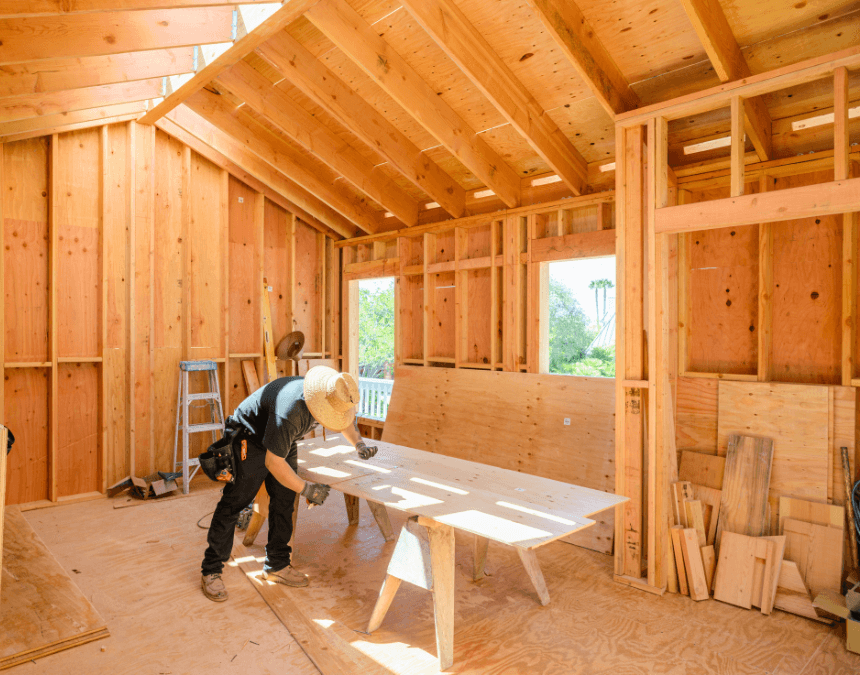
Partner with a builder who understands sustainable detailing—proper ventilation, daylighting, and eco-conscious materials start at the framing stage.

